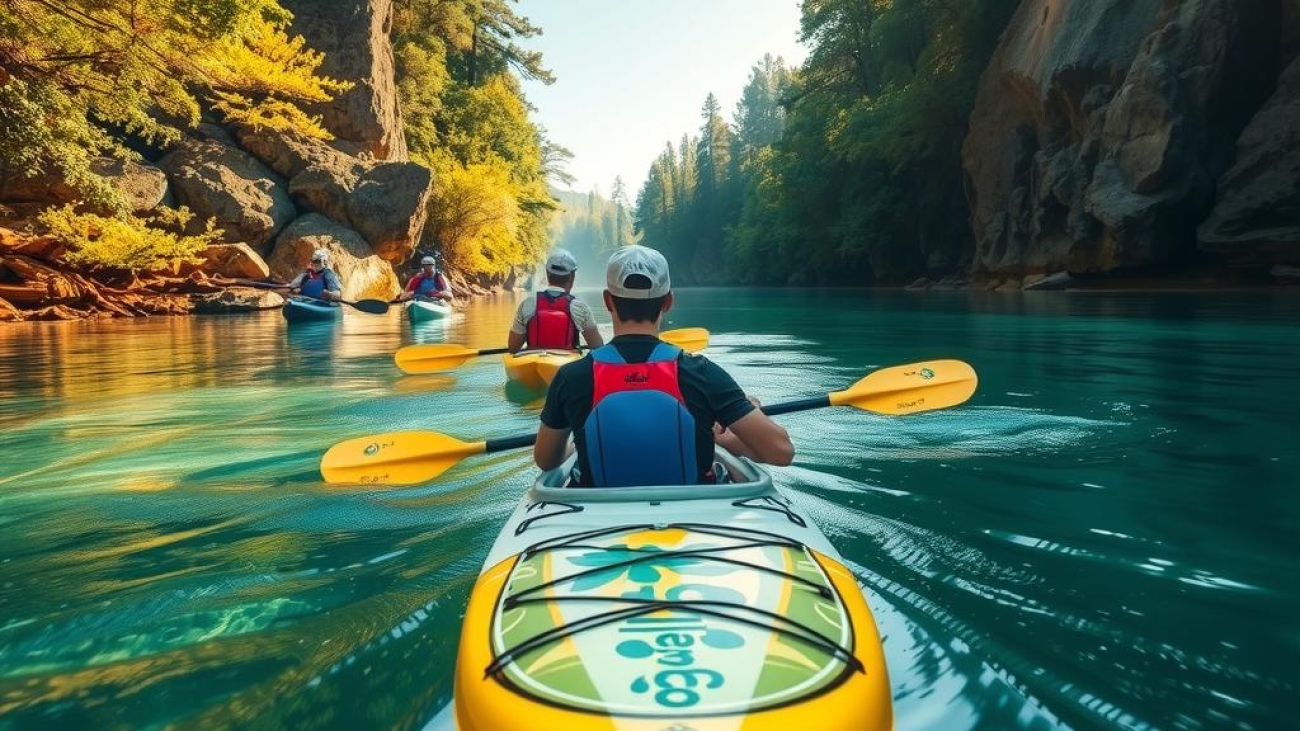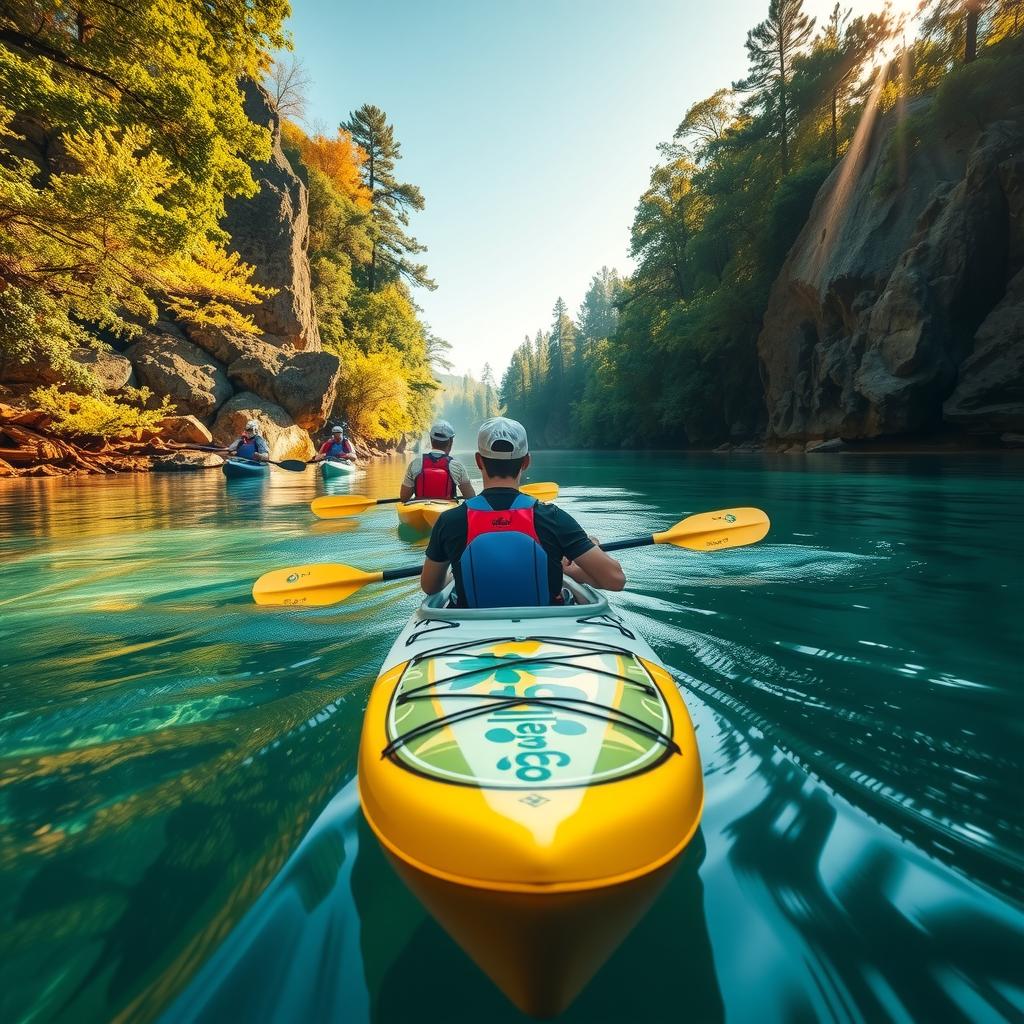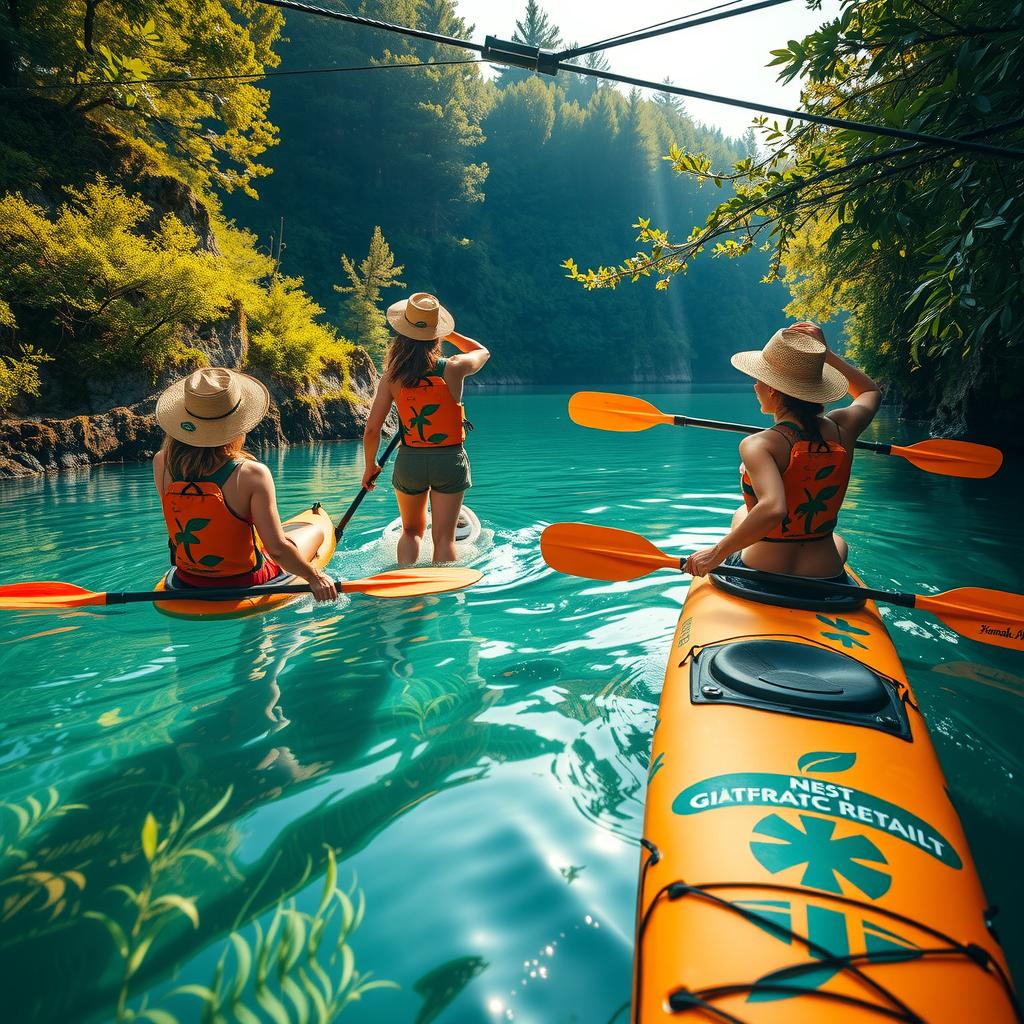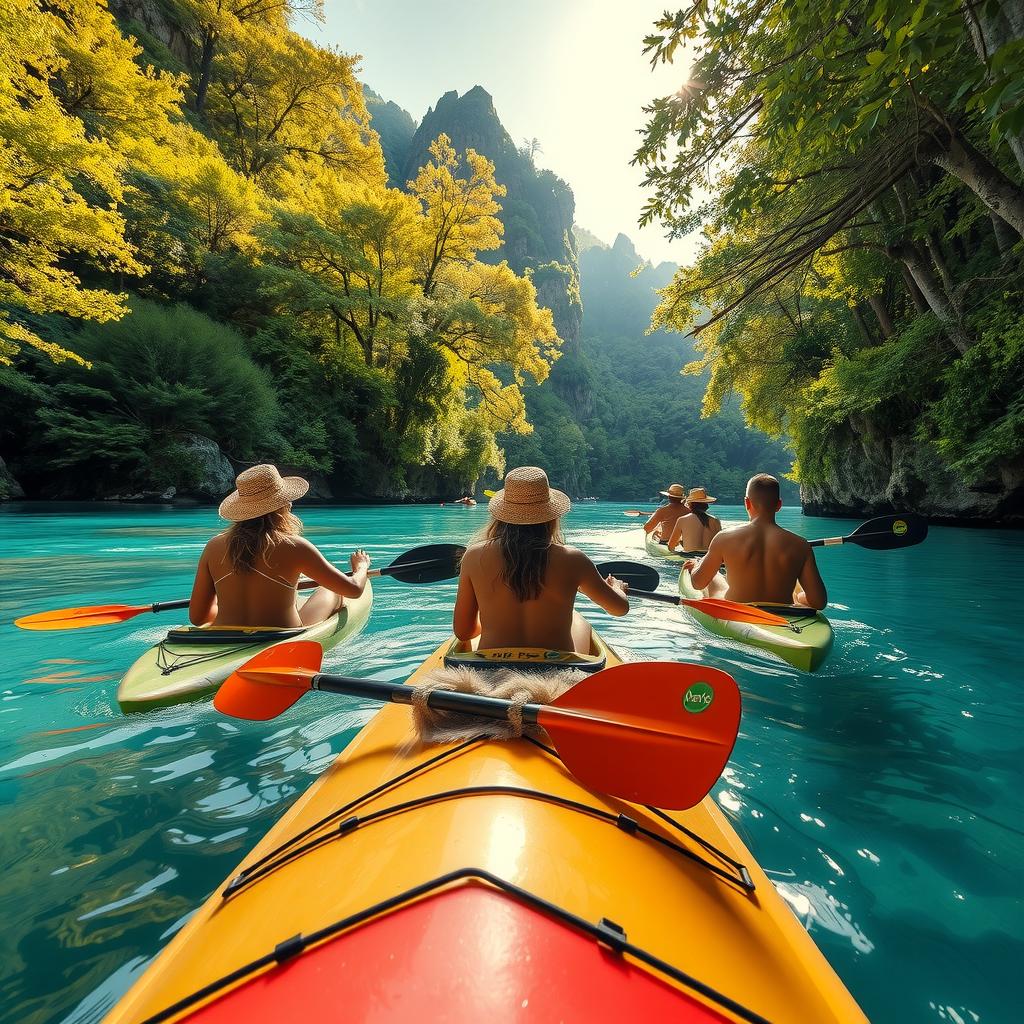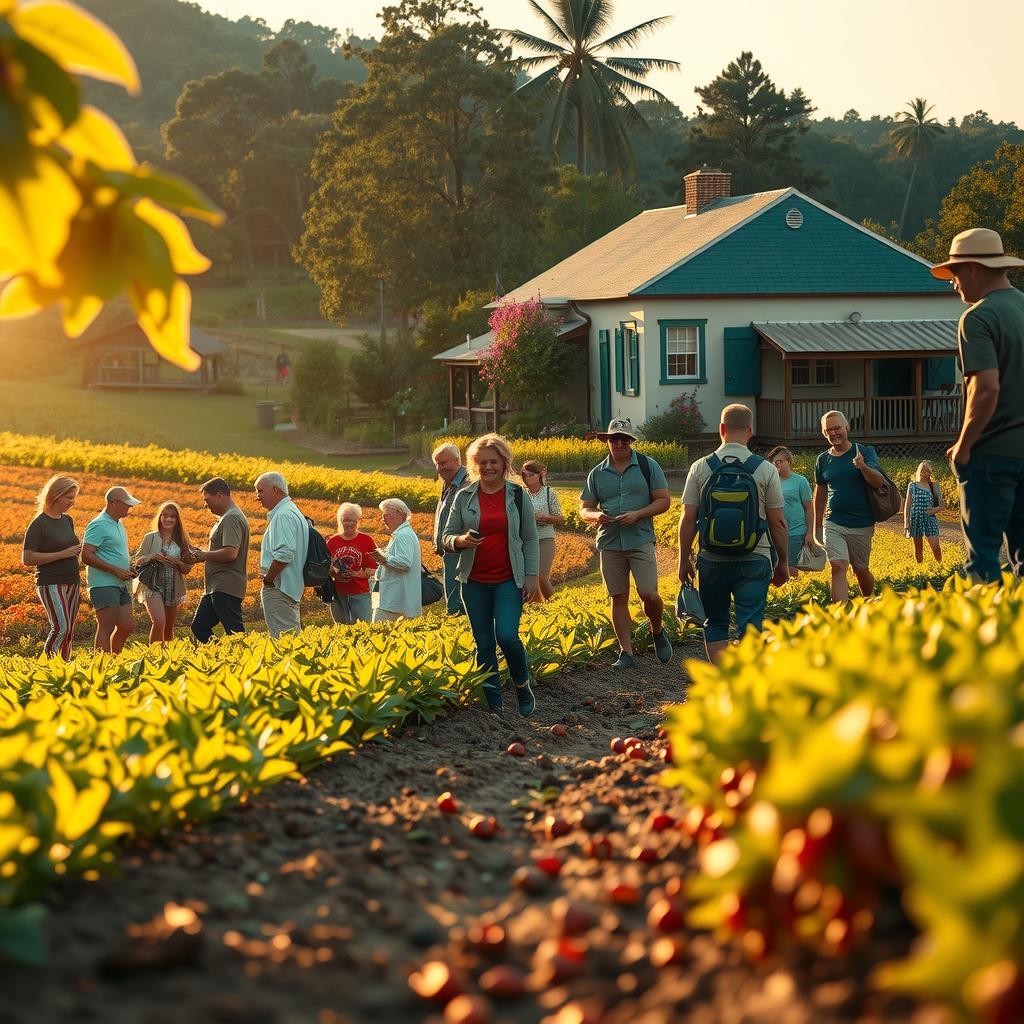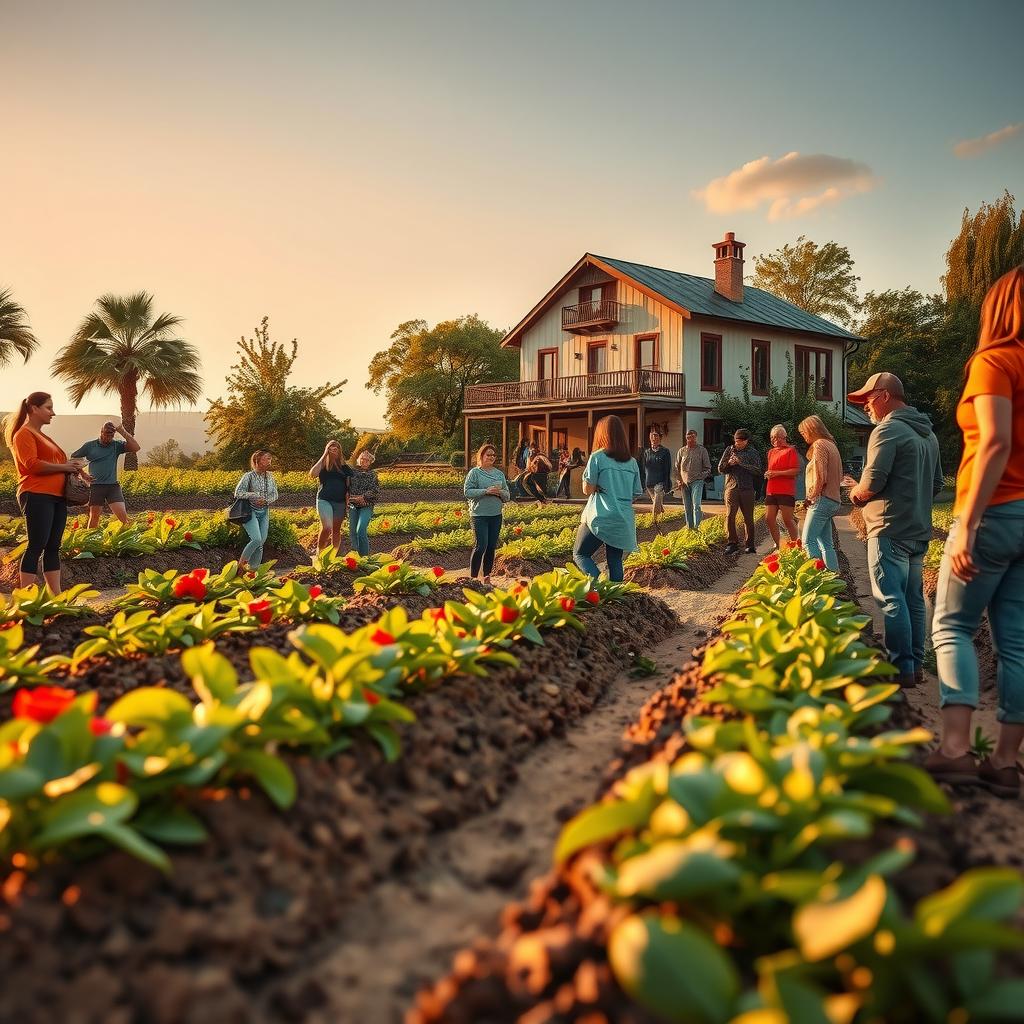In recent years, the travel industry has witnessed a significant shift in consumer preferences, with many travelers increasingly seeking out sustainable travel options over traditional tourism. This transition raises important questions about the financial implications of adopting eco-friendly practices versus sticking to conventional methods. Understanding the cost comparison between these two approaches is essential for those who wish to make informed decisions while planning their trips. As travelers become more conscious of their choices and their effects on the planet, it is crucial to explore how sustainable tourism expenses stack up against those associated with traditional tourism.
The allure of traditional tourism often lies in its familiarity and convenience; however, this conventional approach frequently comes at an environmental cost that many are now keen to minimize. On the other hand, embracing sustainable travel can entail higher upfront costs but may yield long-term economic benefits by promoting local economies and preserving natural resources. The concept of responsible tourism encourages visitors to engage meaningfully with destinations while considering their environmental impact—an aspect that adds layers of complexity to any budget for sustainable travel.
While evaluating different types of accommodations, transportation methods, and activities available within both frameworks reveals stark contrasts in pricing structures, it also highlights potential savings associated with eco-friendly initiatives. For instance, opting for green travel options such as public transport or biking not only reduces carbon footprints but can also lead to decreased expenses when compared to renting cars or using taxis commonly found in traditional tourism. Additionally, many communities prioritize sustainability by investing profits back into local infrastructures or conservation efforts—a practice that enhances traveler experiences without significantly inflating overall costs.
Moreover, incorporating aspects like energy-efficient lodging and locally-sourced dining into one’s itinerary may appear pricier initially; however, these choices often align with growing trends towards ethical consumption among modern travelers. Understanding this balance between initial investment and longer-term gains will help prospective tourists navigate the sometimes-confusing landscape surrounding responsible tourism costs. Analyzing how each model contributes differently toward various facets—including cultural preservation—can provide deeper insights into what truly defines value within both realms.
As individuals weigh their options for upcoming adventures amid rising awareness regarding climate change and resource depletion issues globally linked to mass travel patterns evident through prevalent models like traditional tourism, taking time to evaluate personal priorities becomes paramount when budgeting for a trip focused on sustainability rather than mere escapism alone remains essential today more than ever before!
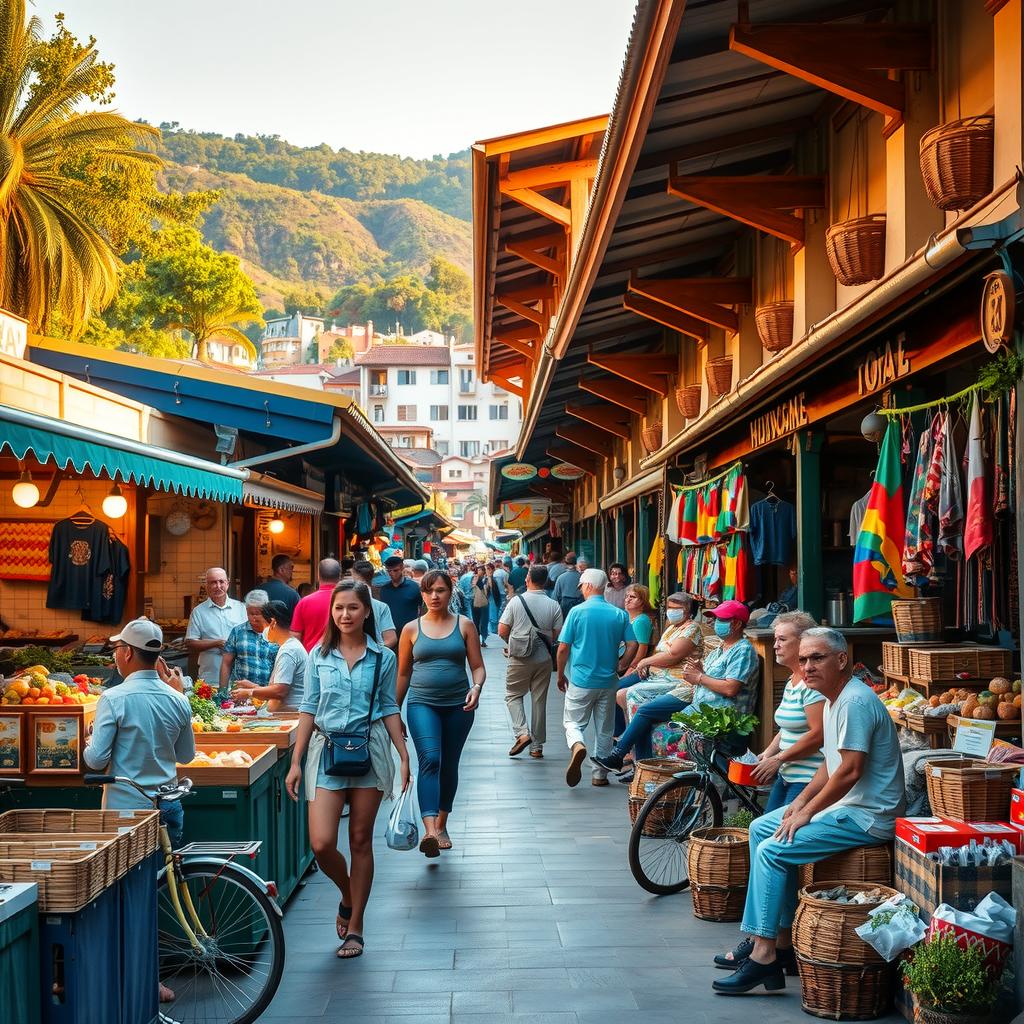
Essential Insights:
The cost comparison between sustainable travel and traditional tourism highlights significant differences in expenses and benefits. While traditional tourism often prioritizes convenience and mass appeal, it frequently overlooks the long-term environmental costs associated with high carbon footprints, resource depletion, and habitat destruction. In contrast, sustainable travel emphasizes responsible practices that seek to minimize these adverse effects. Travelers who prioritize eco-friendly options may find higher upfront costs but can offset these through long-term savings on energy consumption and waste management.
Investing in sustainable tourism expenses typically involves budget considerations that differ markedly from those of conventional travel. This includes expenditures on local businesses, organic food sources, or accommodations committed to sustainability practices. Although some might perceive these as added costs compared to the cheaper alternatives offered by traditional tourism, they ultimately contribute to a healthier economy for the destinations visited. Supporting local economies fosters better community relations while enhancing the overall experience of travelers seeking authentic connections during their journeys.
The economic benefits of sustainability are becoming more apparent as travelers increasingly weigh their choices against the environmental impact of travel. By opting for responsible tourism costs associated with green travel options such as public transportation or eco-lodges instead of large resorts linked to mass tourism, individuals can significantly reduce their ecological footprint while enjoying unique experiences. Such choices not only benefit ecosystems but also encourage industry stakeholders to invest in sustainable initiatives that promote both conservation efforts and traveler satisfaction over time.
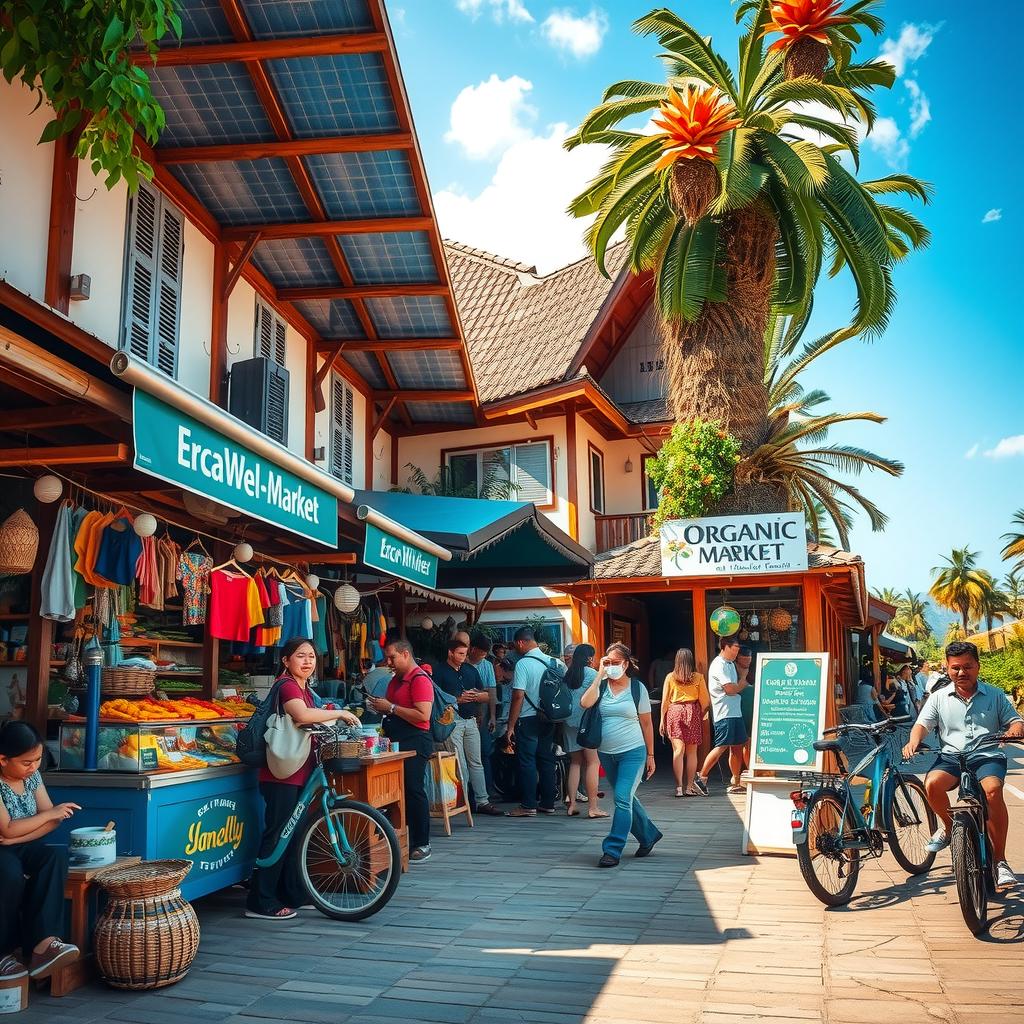
The Cost-Benefit Analysis of Sustainable Travel Practices
Evaluating the Financial Trade-offs in the Tourism Industry
The growing awareness surrounding environmental sustainability has prompted travelers to reconsider their options, including a shift from traditional tourism to sustainable travel. This transition presents significant financial trade-offs that must be carefully analyzed. On one hand, adopting eco-friendly travel practices often entails higher upfront costs, such as investing in green accommodations or transportation methods that prioritize lower emissions. For instance, choosing an eco-conscious hotel may present a premium compared to standard lodging options commonly associated with traditional tourism. However, these initial expenses are frequently offset by long-term economic benefits of sustainability; such as reduced utility bills due to energy-efficient technologies and potential government incentives for businesses adopting environmentally friendly practices. Moreover, there is growing evidence suggesting that travelers increasingly prefer destinations committed to sustainable initiatives, which can enhance local economies through increased tourist spending on responsible services and products.
Comparative Assessment of Sustainable Tourism Expenses
Understanding Budgeting for Eco-Friendly Travel
In analyzing the cost comparison between sustainable travel and its traditional counterpart, it becomes essential to consider not just the immediate expenditures but also the broader implications on budgets allocated for vacations. While some may argue that opting for sustainable choices incurs additional costs—such as utilizing organic food sources or participating in conservation-oriented activities—the reality is more nuanced when factoring in overall experience quality and value received during trips. Travelers engaging in responsible tourism often report greater satisfaction derived from authentic experiences aligned with their values regarding environmental stewardship. Furthermore, many destinations focusing on sustainable practices offer unique opportunities like community-based tours or local artisan workshops at competitive prices compared to conventional attractions endemic within traditional tourism frameworks.
Environmental Impact Considerations
Weighing Costs Against Ecological Benefits
A deeper dive into the economic implications surrounding responsible tourism reveals an urgent need to weigh direct monetary costs against significant ecological benefits accrued from embracing green travel options. The environmental impact of travel extends beyond personal preferences; it encapsulates a collective responsibility towards preserving natural resources for future generations while fostering biodiversity protection efforts globally. Investments made toward promoting sustainable tourism can yield substantial returns—not only mitigating negative consequences associated with mass-tourism models prevalent among traditional tourism, but also enhancing public health through cleaner air quality resulting from reduced vehicle emissions and waste management processes designed around circular economy principles.
Shifting Consumer Preferences Towards Sustainability
Economic Advantages Arising From Sustainable Practices
As consumer demand shifts towards more conscientious choices regarding vacation planning, understanding these trends provides insight into potential economic advantages arising from sustainable travel. Tourists today are increasingly motivated by values congruent with ethical consumption patterns; thus destinations prioritizing sustainability witness heightened interest leading directly into revenue increases driven by this evolving market segment’s willingness-to-pay premiums for eco-conscious offerings over less impactful alternatives typical within mainstream sectors dominated by traditional paradigms set forth under traditional approaches seen historically throughout hospitality industries worldwide (e.g., hotels offering single-use plastics). In this dynamic landscape shaped around mindful consumption habits pioneered chiefly out of necessity amidst climate change discussions gripping global attention today—the balance achieved between cost efficiency inherent within operating sustainably versus reliance upon outdated business models ultimately influences profitability margins across entire sectors poised precariously at crossroads confronting existential challenges ahead unless proactive measures taken swiftly embrace dual imperatives manifestly evident: both financial viability alongside ecological integrity safeguarded moving forward proactively rather reactively post-factum once detrimental effects irreversibly entrenched deeply rooted therein affecting all stakeholders involved alike currently navigating turbulent waters steering clear away potentially catastrophic scenarios foreseen looming imminent if left unchecked indefinitely unresolved henceforth perpetually needing addressing responsibly collaboratively united purposefully collectively striving toward common goals shared widely comprehensively seeking harmony attained sustainably holistically harmonizing human activity equitably without compromising nature’s delicate equilibrium maintained intact forevermore safeguarding our planet’s legacy cherished dearly together assuredly unto eternity!
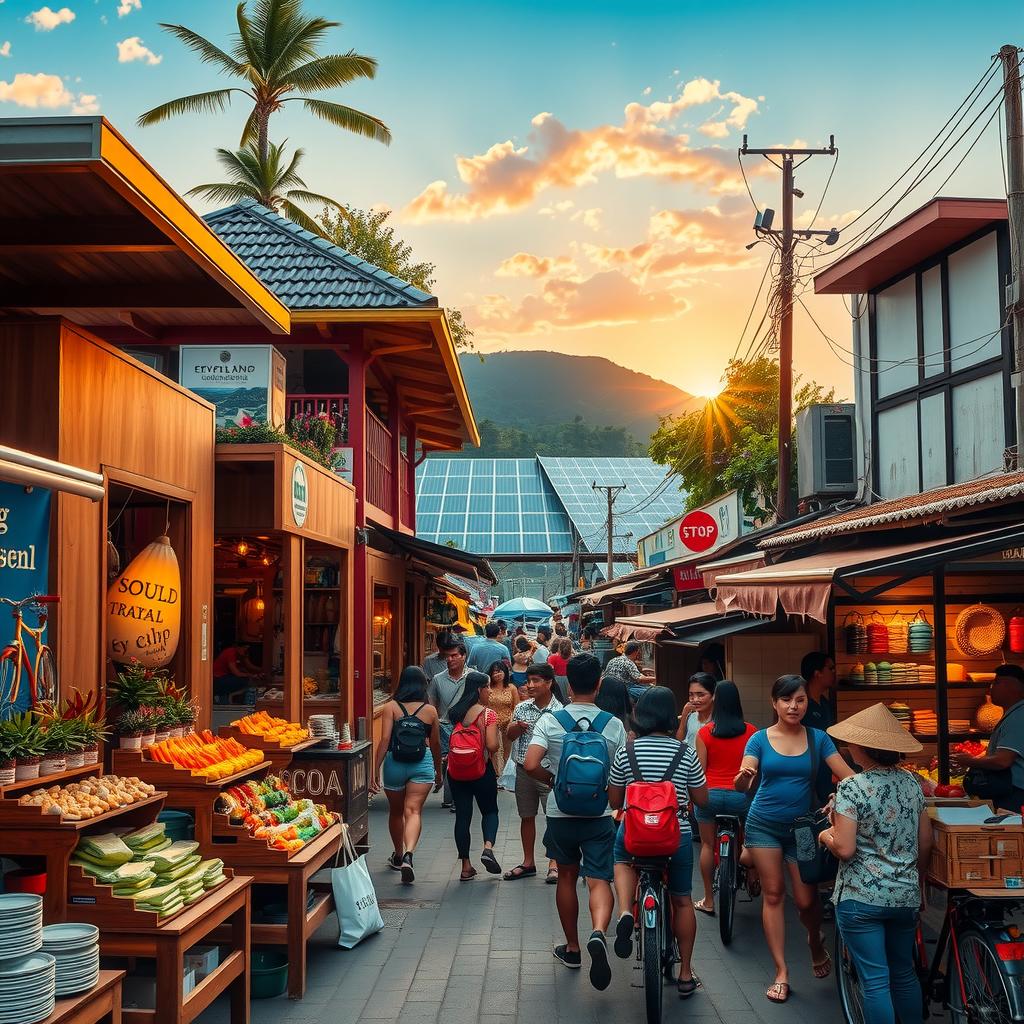
Environmental Impact Assessment: Weighing Footprints
Analyzing the Ecological Consequences of Travel Choices
The environmental impact of travel is a growing concern as more individuals and organizations recognize the importance of making informed choices. When comparing sustainable travel with traditional tourism, it becomes evident that each method carries distinct ecological footprints. Sustainable travel methods, which prioritize eco-friendly practices, often reduce carbon emissions through options such as biking, walking, or using public transportation. In contrast, traditional tourism frequently relies on personal vehicles and air travel, contributing significantly to greenhouse gas emissions and environmental degradation.
Research indicates that while the upfront costs associated with sustainable tourism expenses may appear higher—due to investments in renewable energy sources or green accommodation—the long-term economic benefits of sustainability can outweigh these initial financial burdens. For instance, destinations that embrace responsible tourism develop infrastructures that promote local economies while preserving natural resources. This model not only supports community development but also enhances visitor experiences by fostering authentic interactions with culture and nature.
A comparative study reveals stark differences in energy consumption between both approaches. Travelers opting for green travel options such as eco-lodges or organic farms typically engage in minimalistic lifestyles during their stay—favoring locally sourced food and sustainable products—while minimizing waste generation through conscious decision-making processes regarding what they consume. Conversely, those participating in traditional tourism may unknowingly contribute to resource depletion due to high demands placed on local ecosystems from mass tourist activities.
Moreover, evaluating the cost comparison between these two methodologies offers insights into how travelers allocate their budgets concerning environmental values. While one might assume that adopting a budget for sustainable travel would be limiting due to potential costs involved in greener choices like organic meals or eco-tours, evidence suggests otherwise; many environmentally-conscious travelers find innovative ways to enjoy lower-cost alternatives without sacrificing quality experiences.
In addition to individual traveler impacts, communities hosting tourists must weigh responsible tourism costs against potential income generated from visitors who appreciate conservation efforts alongside cultural heritage offerings. As global awareness around climate change continues rising among consumers and businesses alike, an increasing number are seeking out opportunities aligned with their values—which include supporting destinations committed to sustainability initiatives aimed at reducing their ecological footprint.
Ultimately, understanding the complex interplay between different modes of transport within both sustainable travel and traditional tourism contexts is essential for promoting environmentally-responsible behaviors amongst future generations of explorers while ensuring we leave behind thriving ecosystems rather than barren landscapes ravaged by over-consumption. As research continues evolving surrounding this subject matter—including advancements towards measuring carbon offsets—it will become increasingly critical for stakeholders across industries engaged within leisure sectors worldwide strive collaboratively toward implementing best practices rooted firmly within principles advocating ecological integrity above all else.
The Essence of Connection in Sustainable Travel
Delving into Authentic Cultural Experiences
Engaging with local communities through sustainable travel offers a profound opportunity for travelers to form genuine connections that far surpass the often superficial interactions encountered in traditional tourism. This approach encourages visitors to immerse themselves in the rich tapestry of local cultures, traditions, and lifestyles. Rather than merely observing from a distance, sustainable travelers are invited to participate actively—be it through cooking classes featuring indigenous recipes or volunteering for community-driven conservation projects. Such experiences allow tourists not only to witness but also to contribute positively to the local culture while fostering an environment of mutual respect and understanding.
When engaging with locals on their terms—through their customs—the traveler gains insights into daily life that guidebooks cannot convey. The stories shared around a communal meal or during a guided walk led by native experts reveal cultural nuances and values that deepen appreciation beyond mere sightseeing. These authentic interactions cultivate relationships based on respect rather than exploitation, contrasting sharply with traditional tourism’s often transactional nature where encounters may feel fleeting and insincere.
Moreover, sustainable travel often incorporates eco-friendly practices that resonate well within these communities. By prioritizing locally owned accommodations and businesses over international chains, travelers can help ensure economic benefits remain within the region while reducing their environmental impact—a significant consideration in today’s climate-conscious world. A cost comparison between sustainable tourism expenses versus those associated with mass-market options frequently reveals not just financial savings but ethical ones as well. In this light, responsible tourism emerges not only as an alternative but as an imperative for preserving both cultural integrity and ecological balance.
Building Bridges Through Responsible Tourism
How Local Engagement Transforms Travel Experiences
The act of choosing sustainable travel inherently transforms how one engages with destinations by emphasizing long-term relationships over short-lived visits typical of traditional tourism. Travelers who opt for immersive experiences become more attuned to the realities faced by host communities—economic challenges intertwined with cultural preservation efforts compel them towards more meaningful engagement strategies like home stays or participatory workshops led by artisans. Such engagements create lifelong memories shaped profoundly by personal connection rather than generic tourist activities.
In essence, responsible tourism costs are balanced against invaluable learning experiences; immersing oneself fully allows deeper comprehension of socio-economic factors at play within different locales while enhancing intercultural dialogue among participants from diverse backgrounds seeking enlightenment through experience rather than consumption alone. This shift results in increased awareness about issues such as sustainability’s role across global landscapes—including biodiversity loss caused largely due to conventional traveling methods—which inspires proactive measures toward minimizing one’s footprint during journeys.
Furthermore, adopting green travel options fosters resilience among local economies dependent upon visitor influx without compromising authenticity—a delicate balance achieved when tourists prioritize conscious choices aligned closely alongside community welfare goals rather than solely focusing on individual enjoyment at any expense typically seen via mainstream vacation packages available today under traditional models prevalent across much commerce-oriented sectors globally.
Economic Benefits Beyond Borders
Exploring Financial Impact Through Sustainable Practices
Delving deeper into how sustainable travel intertwines economically reveals multifaceted advantages extending beyond immediate financial implications experienced directly at destination points visited compared against standard practices found throughout traditional tourism. While initial outlays might seem higher owing chiefly due diligence required ensuring compliance regarding social responsibility initiatives adopted widely alongside operational norms espoused under ethical frameworks championed globally nowadays; however potential returns reap considerable dividends once contributions realized amplify community vitality sustainably over time leading ultimately resulting improved livelihoods collectively enjoyed amongst residents alike engaging cooperatively together collaboratively towards common goals more effectively achieved together united harmoniously working side-by-side whilst cultivating trust earned reciprocally established initially built earlier mentioned instances witnessed firsthand previously explored aforementioned contexts discussed thoroughly thus far herein before diving further exploring realms encompassing economic impacts originating primarily revolving around core principles underlying fundamental constructs guiding philosophies behind movements propelling forward ever-growing landscape burgeoning steadily worldwide surrounding themes revolving interconnectedness harnessed creatively incorporated dynamically throughout respective ventures undertaken generally speaking broadly applicable universally across various settings transcending borders rural urban alike everywhere increasingly recognized acknowledged valued accordingly progressively moving forward consistently adapting evolving fluidly responding contemporary challenges facing society pressing urgently needing addressing now more crucially ever seen before ultimately defining futures generations yet unborn inherit leaving legacies worth cherishing treasuring holding dear eternally illuminating paths ahead beckoning brighter tomorrows always sought after pursued relentlessly striving onward navigating uncharted territories boldly venturing forth shaping destinies unfolding beautifully organically naturally revealing complexities hidden depths awaiting discovery yearning exploration wondering enlightening minds hearts souls igniting passions inspiring change transforming lives uplifting spirits awakening consciousness paving way fresh beginnings blossoming brightly radiantly shimmering resplendent hues illuminating vast horizons inviting explorations endless possibilities awaiting eager explorers daring traversing pathways carved deep rooted histories informed richly textured narratives telling tales timeless resonating echoing gently whispering softly kindred spirits embracing warmly welcoming arms open wide extending lovingly offering sanctuary solace respite comfort nurtured shared moments cherished forevermore remains etched indelibly memory banks treasured fondly reminisced lovingly recalled precious times spent blissfully enjoyed living vibrantly alive truly connecting authentically
The concept of sustainable travel is gaining traction as more travelers become aware of the environmental impact associated with their journeys. Compared to traditional tourism, which often prioritizes convenience and low costs, sustainable travel typically requires a higher initial investment. This cost comparison reveals that while eco-friendly options may seem pricier at face value—such as choosing organic accommodations or supporting local businesses—the long-term benefits can outweigh these expenses. Travelers who invest in responsible tourism not only contribute positively to local economies but also help preserve natural resources and cultural heritage.
When examining the sustainable tourism expenses, it becomes evident that there are hidden economic benefits of sustainability. For instance, utilizing public transportation instead of renting a car can lead to substantial savings while reducing one’s carbon footprint simultaneously. Additionally, opting for locally sourced meals supports farmers and reduces transportation emissions compared to dining at chain restaurants prevalent in traditional tourism. The budget for sustainable travel might be higher initially; however, this approach fosters an environment where communities thrive economically without sacrificing ecological balance.
Moreover, the environmental impact of travel cannot be overstated when comparing both forms of tourism. While traditional tourism often leads to overcrowding and resource depletion in popular destinations, embracing green travel options within the realm of sustainable travel promotes conservation efforts and encourages tourists to engage meaningfully with their surroundings. This shift towards minimizing one’s ecological footprint ensures that future generations can continue experiencing these environments without fear of degradation.
Frequently Asked Questions:
Q: What makes sustainable travel more expensive than traditional tourism?
A: Sustainable travel often involves eco-friendly accommodations, organic food sources, and activities that support local economies—all of which can have higher upfront costs compared to traditional tourism’s cheaper alternatives.
Q: Are there any economic benefits associated with sustainable tourism?
A: Yes, investing in sustainable practices helps enhance community resilience by promoting local businesses and preserving ecosystems which ultimately contributes positively to long-term economic stability.
Q: How does sustainable travel minimize environmental impact compared to traditional methods?
A: Sustainable travel focuses on reducing carbon footprints through choices like public transport use or staying at eco-certified hotels, unlike traditional methods that may prioritize convenience over environmental considerations.









